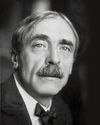
Amir’s house, in Wahat al-Salam/Neve Shalom, an intentional community of Jewish Israeli and Palestinian Israeli families, is made of stone, chic but spare, not showy. A covered porch faces west, looking out at the green expanse of the Ayalon Valley. Amir, who is Palestinian, first moved to Wahat al-Salam/Neve Shalom thirty-five years ago, when he was four. His family had been living in East Jerusalem and wanted to escape the violence of the first intifada. The village school, which goes from nursery through sixth grade, is fully bilingual, with equal hours of instruction in Arabic and Hebrew. When Amir speaks Hebrew, Jewish Israelis have a hard time believing that he is Arab, and they often say so, thinking it’s a compliment.
Wahat al-Salam/Neve Shalom—which means Oasis of Peace, in Arabic and Hebrew—was founded by Bruno Hussar, an Egyptian-born Jew who fled the Nazi invasion of France and later became a Dominican priest. Around 1970, he secured a large parcel of land, on loan from a Trappist monastery, to attempt an experiment in nonmilitarism and religious pluralism in the middle of Israel, halfway between Jerusalem and Tel Aviv. This was the age of encounter groups, gatherings based on a belief in the total power of dialogue, and Hussar envisioned Wahat al-Salam/Neve Shalom as a permanent encounter. By the time Amir’s family arrived, the community had widened its efforts by establishing the School for Peace, a training center for activists, academics, and civil servants. Some eighty thousand people have completed the School for Peace’s courses, which aim to turn citizens of Israel, both Palestinian and Jewish, into agents of change.
This story is from the June 17, 2024 edition of The New Yorker.
Start your 7-day Magzter GOLD free trial to access thousands of curated premium stories, and 9,000+ magazines and newspapers.
Already a subscriber ? Sign In
This story is from the June 17, 2024 edition of The New Yorker.
Start your 7-day Magzter GOLD free trial to access thousands of curated premium stories, and 9,000+ magazines and newspapers.
Already a subscriber? Sign In

HOLIDAY PUNCH
\"Cult of Love\" on. Broadway and \"No President\" at the Skirball.

THE ARCHIVIST
Belle da Costa Greene's hidden story.

OCCUPY PARADISE
How radical was John Milton?

CHAOS THEORY
What professional organizers know about our lives.

UP FROM URKEL
\"Family Matters\" and Jaleel White's legacy.

OUTSIDE MAN
How Brady Corbet turned artistic frustration into an American epic.

STIRRING STUFF
A secret history of risotto.

NOTE TO SELVES
The Sonoran Desert, which covers much of the southwestern United States, is a vast expanse of arid earth where cartoonish entities-roadrunners, tumbleweeds, telephone-pole-tall succulents make occasional appearances.

THE ORCHESTRA IS THE STAR
The Berlin Philharmonic doesn't need a domineering maestro.

HEAD CASE
Paul Valéry's ascetic modernism.